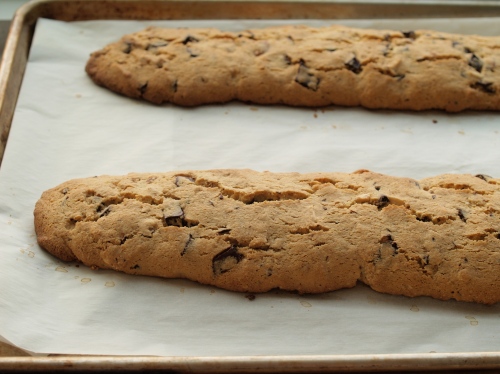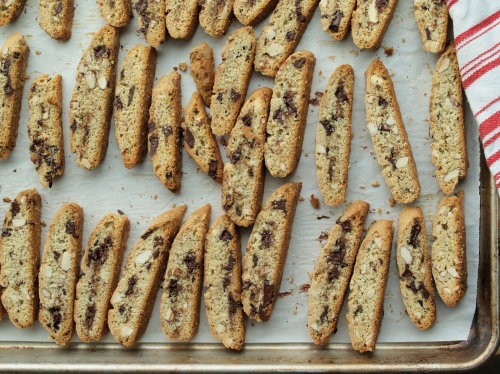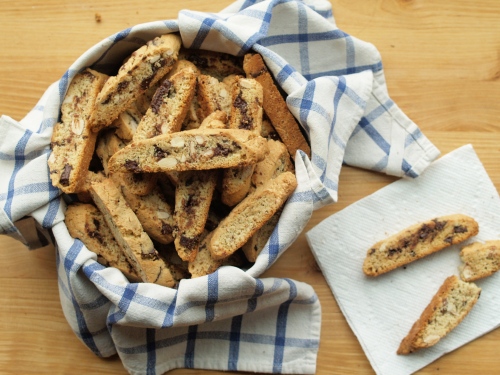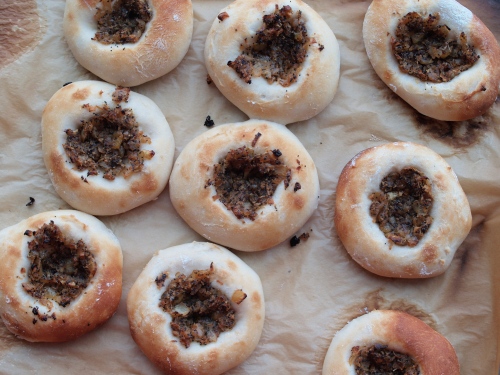Happy Passover!
My first seder this year had all the familiar comforts of traditional Ashkenazi fare surrounded by family. We ordered dinner from the same caterer we’ve been relying on for over 30 years since the first Passover my Bubbie hosted after her husband, my Poppie, passed away. The menu’s remained virtually identical over all those years (though this time we went crazy and got mashed potatoes instead of roasted), and we like it that way.
For the second seder, I returned to New York and went to the James Beard House where Chef Raffi Cohen of Raphael in Tel Aviv prepared a Sephardic feast. While I don’t typically eat kitniyot – legumes, grains, and seeds – on the holiday, I was happy to partake and experience another way of celebrating. The room was filled with flowers – not in vases, but adorning hair and lapels with headbands and boutonnieres that the organizers had woven together in the weeks leading up to dinner.

The flowers and the menu – fresh fava beans, artichokes, young lamb, corn “couscous” – reminded me that Passover is also known as “chag ha’aviv,” the holiday of spring.
I’ll be spending the last days of Passover with my Atlanta family and baked a few sweet snacks to bring along. While I never got around to trying Claudia Roden’s almond orange cake like I said I would, I have developed a mandel bread recipe.

One of the fun things about Passover cooking is the challenge that ingredient limitations bring. Granted, I’m lucky enough not to have to pull off entire meals, so I can find joy in making just a few special dishes. I love biscotti and thought that mandel bread would be a worthy trial of my own self-inflicted Passover baking restrictions: no matzah meal, no cake meal, no potato starch.

Mandelbrodt in Yiddish means almond bread, and I was determined to come up with a recipe that only uses 100% almond flour. Extensive searching yielded few results (thanks Molly and Jessica for helping me on my quest) and both of those recipes used little to no egg. Eggs are important for biscotti and their double-baked brethren. Which brings us to a little science and how I worked out this recipe. I’ve done enough experimenting with biscotti to have figured out a few tricks to yield cookies that are crispy and crunchy but not tooth-shatteringly hard. (Remind me to tell you about the job I clinched with a presentation about biscotti).

Mandel bread typically contains oil which results in a moister, crumblier cookie compared to biscotti, but since I was using almond flour which has a lot of its own oil, I figured I could hold off on the oil and see how things turned out. (Plus, I didn’t feel like going out to buy Passover vegetable oil.)
To prevent the cookies from becoming leaden, I whipped the eggs with sugar for a good five minutes. This aerates the dough and helps the mandel bread stay light and airy. I learned this trick from Joanne Chang of Flour Bakery.
Most mandel bread recipes call for baking powder, but I substituted baking soda (doesn’t require special Passover certification, plus, I didn’t feel like going to to buy Passover baking powder – are you sensing a theme here?) and then added a little bit of lemon juice as an acid to activate the chemical leavener.
Bored yet?
No worries. I’ll just leave you with the recipe.

Chocolate chunk mandelbrodt/mandel bread
Makes 4 dozen
– 3 eggs
– 1 C sugar
– 1/2 t almond extract (optional)
– 1/2 t baking soda
– 1 t lemon juice
– 4 C almond flour
– 1 C raw almonds, chopped
– 5 oz dark chocolate, chopped or 1 C semi-sweet chocolate chips
Prep. Heat the oven to 350ºF. Line a large baking sheet with parchment paper.
Whip. Using a stand mixer fitted with the whisk attachment (or a hand-held mixer), beat together the eggs, sugar, and extract on medium-high for 5-6 minutes, or until the mixture is light and thick and lemon colored.
Mix. Switch to the paddle attachment on your mixer or grab a large spoon or spatula. Mix in the baking soda and lemon juice. Gently fold in the almond flour just until it’s incorporated – the mixture will be thick and sticky. Mix in the nuts and chocolate.
Bake. Form the dough into two long, skinny logs on the baking sheet, about 16 inches long and 2 inches wide, making sure to leave space between them because they will spread a bit. There will be a lot of patting and nudging, but eventually you’ll wrangle it into the right shape. Wet your hands to keep the dough from sticking to them too much. Bake for 30-35 minutes, until the logs are golden brown, cracked, and firm to the touch in the middle.
Lower heat. Reduce oven to 300ºF.
Cool. Allow the loaves to cool on the baking sheet for about 20 minutes until they’re cool enough to handle.
Slice. Transfer the loaves to a cutting board and, with a sharp serrated knife, slice on a diagonal into 1/2-inch cookies, approximately 2 dozen per loaf.
Bake again. Return the slices, cut side down, to the baking sheet and bake for 15 minutes. Remove the sheet, flip the slices, and return to the oven for another 15 minutes.
Cool. Let cool completely.
Store. The cookies can be stored in an airtight container at room temperature for up to 2 weeks.

